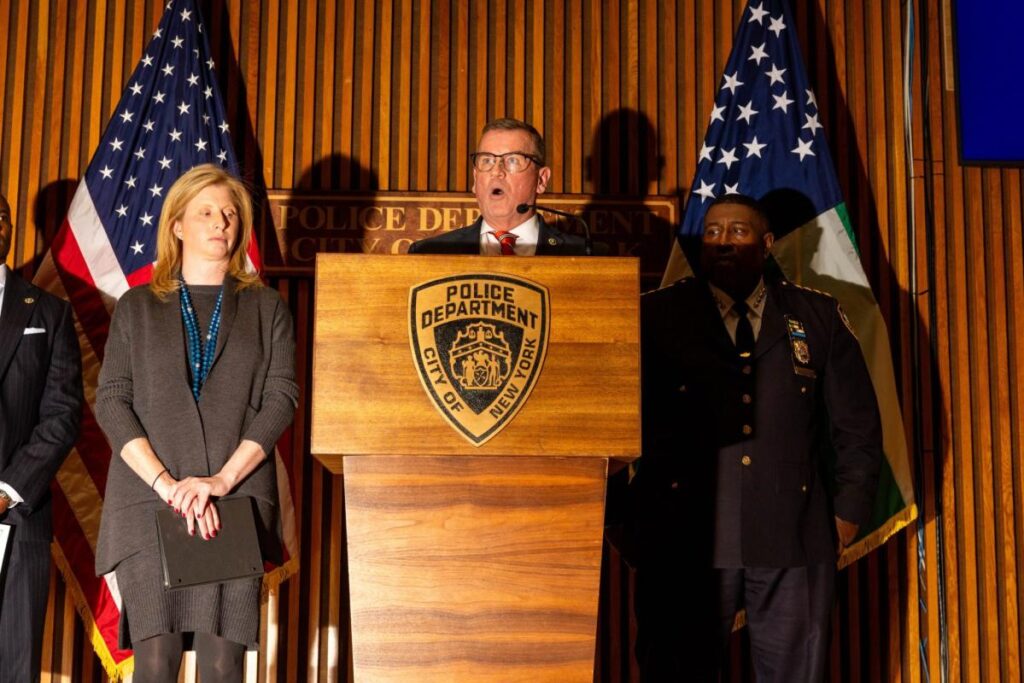On Wednesday, a shocking incident unfolded in New York City, resulting in the tragic death of Brian Thompson, the CEO of UnitedHealthcare. As investigators delve deeper into the case, significant attention is being paid to the type of weapon used in the crime. Initial reports suggest that the shooter may have employed a veterinary pistol—an uncommon firearm typically utilized on farms for euthanizing animals, as disclosed by NYPD Chief of Detectives Joseph Kenny. Although it’s yet to be confirmed that a veterinary pistol was indeed used, authorities are actively exploring this avenue. The gunman fled the scene promptly after the shooting and is believed to have left New York City via a bus, adding urgency to the investigation as law enforcement seeks leads.
As the investigation progresses, authorities have been focusing on the recovery of the weapon itself, which remains elusive. Sources indicate that police divers are searching a nearby lake at the Central Park Boathouse in hopes of locating the firearm. Meanwhile, security footage has captured the harrowing moment when the gunman fired at Thompson. Observers noted that the assailant appeared to use a silencer-equipped pistol, a detail that further complicates the crime due to its unusual nature. Additionally, forensic experts have reported a distinctive method of reloading observed in the footage, where the shooter manually racked the weapon following each shot—a stark contrast to most semi-automatic handguns that typically chamber rounds automatically.
In the wake of the attack, investigators are also probing into the possibility that the shooter may have had ties to UnitedHealthcare. This includes considering whether the individual could be a disgruntled employee or client. UnitedHealthcare is a major entity within the healthcare sector, insuring over 49 million individuals across the United States. The implications of such a motive could have significant ramifications for the company’s reputation and operations, intensifying the detective work as they sift through clues and leads that could connect the shooter to the organization.
Evidence pertaining to the shooting is being meticulously analyzed. Investigators have located a cellphone along the escape route, alongside a water bottle and a protein bar wrapper, which have all been tested for DNA. Police efforts have been methodical, as noted by Chief Kenny, who emphasized the necessity of thoroughness in the investigation. “We’re not going to solve this in 60 minutes,” he remarked, highlighting the complexity and intricacies involved in building a case strong enough to present to a judge and jury.
The psychological impact on Thompson’s family and the community at large cannot be understated, particularly in light of his prominent position as the leader of a major healthcare provider. The tragic event underscores ongoing concerns regarding workplace violence and the potential threats facing executives, especially within high-stakes industries such as healthcare. As law enforcement continues to pursue leads in this case, there is an acute awareness of the need for justice for both Thompson’s family and the broader community that has been shaken by this violent act.
As the investigation unfolds, it remains to be seen whether clarity will emerge about the motives behind the shooting and the identity of the perpetrator. The unique details surrounding the weapon used and the circumstances of the crime itself are points of both intrigue and concern. Law enforcement remains steadfast in their commitment to ensuring that every piece of evidence is thoroughly examined before proceeding with any potential arrests, aiming to preserve the integrity of the case and honor the memory of the victim as they work towards a resolution.

